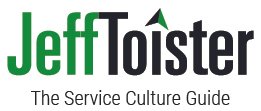Your organization has decided it’s time to work on customer service.
Maybe there’s been a few complaints. Perhaps employees are struggling to do things right. It could be that an executive simply decided it was time.
Training is the reflexive solution. Pick some topics, determine how long the training should be, and get it scheduled. It seems like a magic cure-all, sort of like aspirin for the corporate world.
It’s a strategy that rarely works.
There are a myriad of reasons why customer service training programs fail.
Outcomes aren’t clearly defined.
Specific behaviors aren’t identified, so the training becomes generic.
New skills aren’t reinforced.
Here’s the biggest culprit: training is only a 1 percent solution.
Below is my analysis. The percentages are rough estimates and averages, not absolutes, but they paint a pretty clear picture.
What Causes Service Failures?
You need to know what's causing the problem before you select a solution.
In his book, Strategic Customer Service, customer service expert John Goodman estimated that service failures can be attributed to poor products and services, customer error, and employee mistakes or attitudes:
Training is employee-focused, but Goodman estimates that employees are responsible for only 20 percent of service failures.
What about the other 80 percent?
The largest share of service failures (60 percent) are caused by poor products or services. This includes defects, unfulfilled promises, and broken systems.
Customers also cause their fair share of service failures (20 percent) due to their own errors or inappropriate expectations.
A training-only solution is likely to miss a lot of the problem. In fact, I had training all the way down at number seven on my Next Level Customer Service Action Plan.
What can training actually do?
It’s helpful to look at some of the factors that impact a customer service employee's performance:
Knowledge
Skills
Abilities
Attitude
Peer Pressure
Leadership
Training can only improve the first three: knowledge, skills, and abilities.
This leaves other factors unaccounted for by a training class.
You can’t train someone’s attitude.
A training program won’t turn co-workers into more positive influences.
Sending an employee to training won’t make their boss a better leader.
All of these factors are intertwined and difficult to separate. It might be fair to give training 50 percent of the credit since training can improve half the items on the list.
Since employees only account for 20 percent of service failures and training can only improve half of that, we’re down to 10 percent.
But wait, we’re not done yet. Most training doesn’t occur in the classroom.
When does learning happen?
The American Society for Training and Development released a white paper in 2009 that identified the role of informal learning in employee development. The paper described the 70 - 20 - 10 rule, which roughly estimates how employees learn.
70 percent comes from an employee’s own experiences.
20 percent comes from the employee’s manager.
10 percent comes from formal training.
That’s right - only 10 percent of learning comes from the training class itself. Since training is only 10 percent of the customer service improvement solution, that puts the impact of the typical customer service training class at only 1 percent.
The remaining 99 percent is much more important, yet routinely ignored.
What’s the solution?
A holistic approach is needed that addresses 100 percent of the problem.
Step 1: Clearly identify the problem you are trying to solve
Determine the gap between existing and desired customer service. It’s hard to get better at anything unless you can articulate what success looks like. You might start by creating a customer service vision and establishing a SMART goal.
Step 2: Analyze the cause of the gap
Imagine you went to a doctor to get treatment for back pain. Without conducting an examination, the doctor prescribes a new drug that she happened to learn about from a sales rep earlier that day.
How confident would you be in the doctor’s recommendation?
Trying to solve a problem without first doing an analysis is the same thing. You must first try to understand what’s keeping you from reaching your customer service goal before you select the most appropriate solution.
Step 3: Select a solution
Now, it’s time to take action.
Training can be very effective, if used the right way. Here are some resources to help you out if you do decide training should be part of the solution.
Worksheet: Learning Objectives
Worksheet: Workshop Planner



